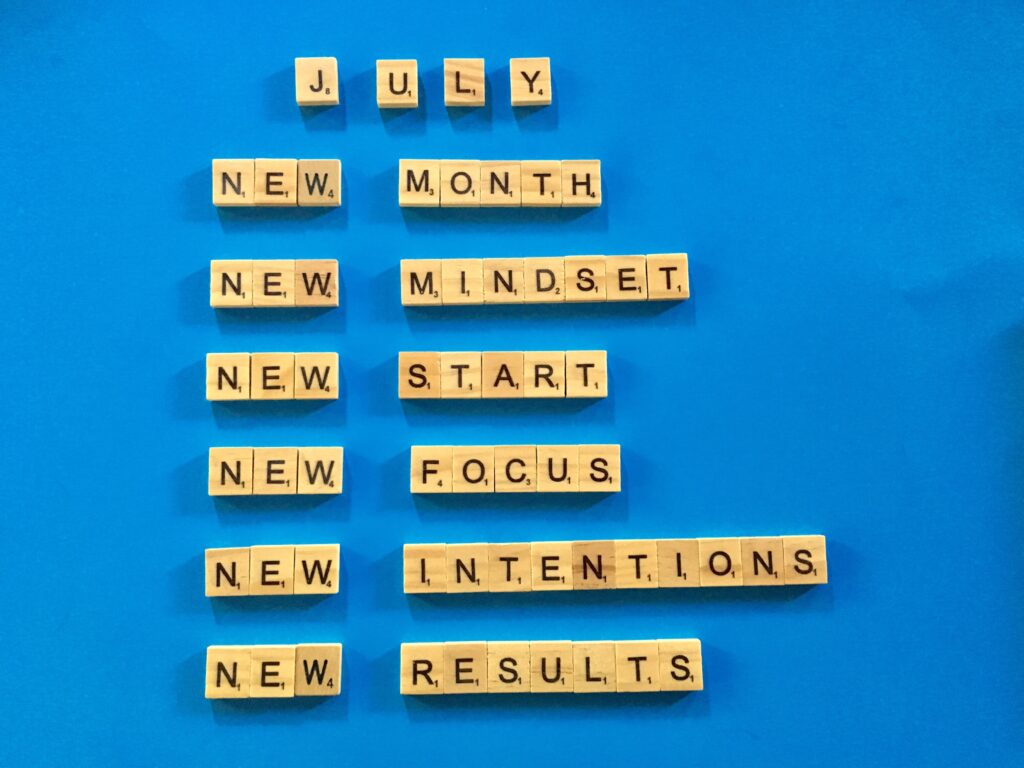Welcome back, fellow self-development nerds! In the previous article about mindset, we talked about how important it is in our lives, what science says about it, and how this one book “Think Like A Monk” by Jay Shetty approaches the topic of self-development. This article is an extension of that and is Part 1 in the Think Like A Monk series where I:
- Go over the individual chapters inside the book
- Share my learnings from the book
- Share key takeaways so you can gain value without even reading the book
Once again, if you need context, go back to the previous article which is really an introduction to the world of mindset and how we can transform our lives using it.
Think like a Monk – Unfiltered and Summarized
Chapter 1 – “Identity”

Who am I?
Chapter one in Think Like A Monk is all about finding your true self. Realizing your identity and using it for good. Jay Shetty summarizes it perfectly in this line – “Our identity is wrapped up in what others think of us — or, more accurately, what we think others think of us”.
The majority of the time, people spend becoming what they think others would appreciate them for. We live in that idealistic impression of what another person likes and so we spend countless hours trying to mimic that projection. In reality, by doing this, we stray further and further away from who we actually want to become.
Society wants us to be fitter and have that lean, muscular body – so we spend hours in a gym to realize that ideology. It’s perfectly okay to work on your health and become fit. But when we start over-thinking about and think that the whole process is to actually satisfy what society demands of us, then that starts becoming toxic and unhealthy. The bottom line is to work on what You want to become and Not what someone else wants you to become.
Favorite Quote:
“I am not what I think I am, and I am not what You think I am. I am what I think you think I am” – Charles Horton Cooley
Favorite Exercise – Audit your Time
Spend a week (or less) tracking how much time you devote to the following:
- Family
- Friends
- Health
- Self
The areas that you spend the most time on should match with what you value the most. If they don’t, then you’re doing something wrong and you need to reflect on that.
Chapter 2 – “Negativity”

Chapter two focuses on reframing our minds in order to challenge negative thoughts and reframe them with positive ones. Jay uses the everyday analogy of gossiping – the center-piece of the modern world. Our society thrives on gossip. Talking shit about someone else (for whatever reasons) somehow offers us this sense of gratification that we don’t get from other things.
Jay relates it to the three basic human emotional needs – Peace, Love, Understanding – In the case of negative emotions, they spring up from our conversations, emotions, and actions.
TLDR – a fear that bad things will happen (when you lose peace), the fear that no one loves you (lack of love), and the fear that you’ll be disrespected (loss of understanding). By reframing these three objections with positive thoughts, we will be well on our way to having a negativity-free mindset. Do remember that negativity will continue to exist for as long as we live.
For me, negative emotions present a challenge that needs to be overcome – it gives us direction and when we’re self-aware that we want to overcome them, we try different strategies and techniques. If we think we are perfect and IF there comes a time when our minds become completely negativity-free, we lose that sense of purpose. Our whole life becomes directionless. So, my friends, focus on treating negativity as a challenge, not as something to rid your mind of.
Favorite Quote:
“Letting go gives us freedom, and freedom is the only condition for happiness. If, in our heart, we still cling to anything – anger, anxiety, or possessions, we cannot be free” – Thich Nhat Hanh (The Heart of the Buddha’s Teaching)
Favorite Exercise – Reverse Envy
This exercise will help you erase envy from your mindset. Envy doesn’t just exist in front of “supposed enemies”. Sometimes, it’s our friends that increase it.
To start, make a list of five people who you care about and who are super-competitive, in your perception. Come up with at least one reason why they are that competitive and why you’re envious of it. Visualize the positive steps that they take that bring them results and see if you can try them.
Chapter 3 – “Fear”

Jay Shetty goes against the old-age adage of conquering your fears (sure that’s one thing) – Instead, he invites us to use our fears to our advantage, to not shy away from them, but rather form a strong bond with them.
Fear is an innate thing and helps us in many situations. Think back to the last time you came face-to-face with a Lion or a Bear – or the time when someone tried to assault you. Your fear triggered your mental response of fight or flight and your body responded accordingly.
Fear is unhealthy when we offer it the driver’s seat. As jay wrote, our real problem is that we fear the wrong things. In his book, he writes that fears offer us many opportunities to take advantage of. If we give in to that fear, those opportunities might never come our way again. You let your fear take control of you, or you control the fear.
Jay reiterates the need to recognize the fear patterns. When the fear kicks in and when the warning signs show up, we have to be aware and ready to take action. Whether that’s the tension over your exams or stress from work, there’s a certain pattern to fear that if we start to recognize, we can start to work on it.
Two amazing concepts that I read were attachment & detachment. We think of fear as though we are the manifestation of it. In the book, he writes it this way – “I am angry. I am sad. I am afraid”. To respond to this, try shifting, instead, to “I feel angry. I feel sad. I feel afraid”. We need to accept that this fear is temporary i.e. we need to detach from it. Once we attain this detachment, we can start to identify the source of the problem and take remedial action to solve it.
Favorite Quote:
“Find what you’re afraid of most and go live there” – Chuck Palahniuk (Invisible Monsters Remix // Fight Club)
Favorite Exercise – Rate your Fear
The purpose of this exercise is to find out how much something scares you. Acknowledgment is the first step towards improvement.
Draw a line with zero on one end and ten on the other. Now start imagining the worst kind of fear possible and outline them on this line. Think about your current fears and start comparing these. The goal is to find out what really scares you and what fears are just taking up unnecessary mental space. There are things that we think we are scared of but that are actually very trivial when stacked up against our true fears.
Chapter 4 – Intentions

Chapter 4 is all about having good intentions. People have lots of goals and ambitions in their life. You want to have a successful career, accumulate lots of wealth, or are simply looking for happy family life. Now, it’s time to ponder over what your intentions are when it comes to these goals.
- What does being rich provide you?
- Why do you want to be happy?
- How will you recognize what a successful career is?
Jay introduces us to the Four Motivations as described by Hindu Philosopher Bhaktivinoda Thakura. These are:
- Fear – Being driven by the “fear of hell” or the “fear of death”
- Desire – Being driven by the desire for personal gratification through material things like wealth and success
- Duty – Being driven by the desire to do the right thing
- Love – Being driven by the urge to help others
We’re not going to go in-depth on these four motivations but the above link will give you a broad overview of what this means. Jay compels us to look inward and figure out what drives our desires. By understanding these things, we can start reframing them with the correct intentions and make the whole process something to enjoy and look forward to.
The biggest learning from this chapter is to attach a why to these objectives. Jay reinforces this concept through the use of the Why Ladder. What this means is that at every turn, we should keep on asking ourselves why we are performing a certain task. (connect the dots, so to speak)
The best part is – there isn’t a single, identifiable why unless we start self-reflecting. For example, you may volunteer in an NGO to make a good impression on someone (i.e. out of desire and not love). You may support your family out of love, not fear. By working on the whys and mapping them, we will begin to fully understand the extent of our actions and how they contribute to our lives.
Favorite Quote:
“As long as we keep attaching our happiness to the external events of our lives, which are changing, we’ll always be left waiting for it” – Tara Brach (Founder of the Insight Meditation Community of Washington, DC)
Favorite Exercise – A Question Meditation
This exercise will help you find the Why behind every action you do. To start, take a desire you have and ask yourself why you want it. Keep asking until you get to the root of the intention.
Don’t rule out intentions that seem to be negative. Just be aware of them and replace them with positive intentions. At best, reframe them as an opportunity to grow and learn from.
Chapter 5 – Purpose

This chapter deals with purpose – the purpose in our lives, purpose in our careers, purpose in our relationships. Jay defines this as Dharma – a Sanskrit word that in English translates to “Your Calling”. All of us feel that we have a certain calling and that calling will make or break our lives. We’re drawn to figuring out the purpose of our lives. We want to feel assured that we’re not just here to live, but to actually serve a purpose.
“The purpose of a scholar is to spread knowledge. The purpose of a lawyer is to fight for justice.”
According to Jay, “when your natural talents and passions connect with what the universe needs and become your purpose, you are living in your dharma.” Jay reiterates over and over again about the need to self-reflect and find out what we’re here to do – What service are we here to provide? How can we make the earth a better place through our actions?
He writes that “everyone has a psychophysical (internal and external) nature which determines where they flourish and thrive.” We feel passionate when we do something that excites us and also helps others. He shares this magical formula all of us can use to find our Dharma:
Passion + Expertise + Usefulness = Dharma
The goal here shouldn’t be to impress others. If we live for that momentary gratification, we will soon lose that initial burst of passion. And if we perform something that indulges our interests but gets no response from others, then the passion is without purpose. As children and as young adults, we spend time getting involved in various fields to figure out what career we want. But, we don’t fully recognize whether that work will provide joy to us and joy to other people.
We go after the money – “think about the last time someone told you they wanted to become an accountant just because it’s a high-paying job.”
But when they actually get to that level, they find out that the job doesn’t excite them. They force themselves to work for the sake of money but how long will they last?
So, the bottom line is to do what makes you happy but at the same time provides value to others. We will find our purpose when people respond to us and that will not be short-lived.
Favorite Quote:
“It is trust in the limits of the self that makes us open and it is trust in the gifts of others that makes us secure” – Sister Joan Chittister (Benedictine Nun)
Favorite Exercise – Reflected Best-Self Exercise
In this exercise, you’ll create a group of people who’ll help you self-reflect and identify areas to work on and improve.
- Ask people who know you well to join the group – Diversify and include friends and family alike
- Ask them to write a moment when you were at your best. Ask them to be specific about it
- Look for patterns and common themes
- Write out a profile of yourself and aggregate the feedback as if it weren’t about you
- Think about how you can turn your best skills into action
Let’s talk mindset next week too…
This will be all for today. Think Like A Monk has 11 chapters in total and in the next article, we will go over the remaining six. I don’t want to cause an information overload by sharing too much. I hope you liked this article. If you did, I would highly appreciate if you could subscribe to the PlayTru Newsletter. It’s a weekly newsletter in which I’m covering topics like mindset, marketing, lifestyle, and entrepreneurship. I haven’t started sending out newsletters yet as I’m looking to build an email list first. Hope you understand.
P.S. Take care of yourself and your family. See you next week!

